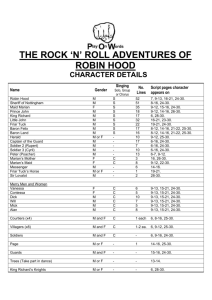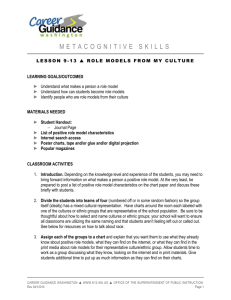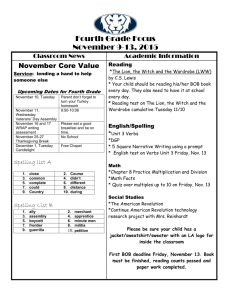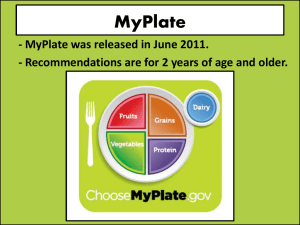Review Q and A Ch 13-15jm
advertisement
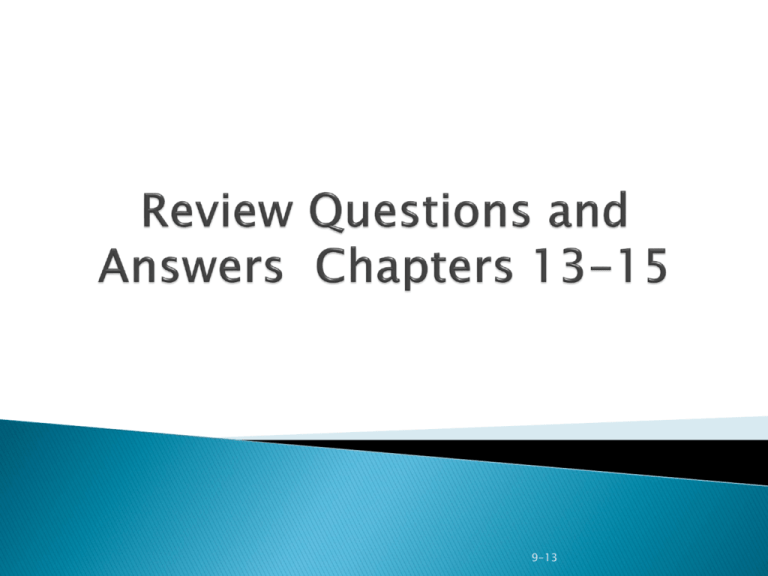
9-13 1. Asthma is a chronic respiratory disease that is increasing in prevalence and is most commonly seen in children. ◦ ◦ ◦ ◦ A. The 1st phrase is correct and the 2nd incorrect B. The 1st phrase is incorrect and the 2nd correct C. Both phrases are correct D. Both phrases are incorrect 9-13 1. Asthma is a chronic respiratory disease that is increasing in prevalence and is most commonly seen in children. ◦ ◦ ◦ ◦ A. The 1st phrase is correct and the 2nd incorrect B. The 1st phrase is incorrect and the 2nd correct C. Both phrases are correct D. Both phrases are incorrect 9-13 2. Asthma is characterized by all of the following except which one. Which one is the exception? ◦ ◦ ◦ ◦ A. wheezing B. cough C. tightness in chest D. increased blood pressure 9-13 2. Asthma is characterized by all of the following except which one. Which one is the exception? ◦ ◦ ◦ ◦ A. wheezing B. cough C. tightness in chest D. increased blood pressure 9-13 3. The most common type of asthma is ◦ ◦ ◦ ◦ A. extrinsic asthma B. intrinsic asthma C. drug-induced asthma D. infectious asthma 9-13 3. The most common type of asthma is ◦ ◦ ◦ ◦ A. extrinsic asthma B. intrinsic asthma C. drug-induced asthma D. infectious asthma 9-13 4. Typical treatment of an asthmatic attack includes all of the following except which one. Which one is the exception? ◦ ◦ ◦ ◦ A. use of a bronchodilator inhaler B. breathing into a paper bag C. upright patient positioning D. administration of oxygen 9-13 4. Typical treatment of an asthmatic attack includes all of the following except which one. Which one is the exception? ◦ ◦ ◦ ◦ A. use of a bronchodilator inhaler B. breathing into a paper bag C. upright patient positioning D. administration of oxygen 9-13 5. An asthmatic condition that is life threatening is termed ◦ ◦ ◦ ◦ A. severe asthma B. asthmatic trauma C. status asthmaticus D. none of the above 9-13 5. An asthmatic condition that is life threatening is termed ◦ ◦ ◦ ◦ A. severe asthma B. asthmatic trauma C. status asthmaticus D. none of the above 9-13 6. What is the appropriate position for a patient having an asthma attack? ◦ ◦ ◦ ◦ A. supine B. semi-supine C. upright with arms forward D. Trendelenburg 9-13 6. What is the appropriate position for a patient having an asthma attack? A. supine B. semi-supine C. upright with arms forward D. Trendelenburg 9-13 7. The number of metered sprays that should initially be administered to a patient suffering from an asthma attack is ◦ ◦ ◦ ◦ A. 1 B. 2 C. 3 D. 4 9-13 7. The number of metered sprays that should initially be administered to a patient suffering from an asthma attack is A. 1 B. 2 C. 3 D. 4 9-13 8. An asthma attack in which the patient can speak only in phrases or partial sentences would be considered of ________ severity. ◦ A. mild B. Moderate C. severe 9-13 8. An asthma attack in which the patient can speak only in phrases or partial sentences would be considered of ________ severity. A. mild B. Moderate C. severe 9-13 1. If patients are experiencing a partially obstructed airway, they will not exhibit cyanosis, whereas if they are experiencing a completely obstructed airway, they will exhibit cyanosis. ◦ ◦ ◦ ◦ A. 1st phrase is true, 2nd is false B. 1st phrase is false, 2nd is true C. Both phrases are true D. Both phrases are false 9-13 1. If patients are experiencing a partially obstructed airway, they will not exhibit cyanosis, whereas if they are experiencing a completely obstructed airway, they will exhibit cyanosis. ◦ ◦ ◦ ◦ A. 1st phrase is true, 2nd is false B. 1st phrase is false, 2nd is true C. Both phrases are true D. Both phrases are false 9-13 2. The procedure used to remove an aspirated foreign object is ◦ ◦ ◦ ◦ A. bronchoscopy B. Heimlich maneuver C. curettage D. none of the above. 9-13 2. The procedure used to remove an aspirated foreign object is ◦ ◦ ◦ ◦ A. bronchoscopy B. Heimlich maneuver C. curettage D. none of the above. 9-13 3. You believe your patient is choking on a cotton roll you have placed in her mouth. She is vigorously coughing. What should you do? ◦ A. Perform the Heimlich maneuver ◦ B. Provide four strong back blows ◦ C. Call EMS so that the patient can be transported to the emergency department quickly ◦ D. Do nothing and let the patient continue coughing 9-13 3. You believe your patient is choking on a cotton roll you have placed in her mouth. She is vigorously coughing. What should you do? ◦ A. Perform the Heimlich maneuver ◦ B. Provide four strong back blows ◦ C. Call EMS so that the patient can be transported to the emergency department quickly ◦ D. Do nothing and let the patient continue coughing 9-13 4. All of the symptoms of an untreated aspirated object except one. Which one is the exception? ◦ ◦ ◦ ◦ A. weight loss B. fever C. tachypnea D. syncope 9-13 4. All of the symptoms of an untreated aspirated object except one. Which one is the exception? ◦ ◦ ◦ ◦ A. weight loss B. fever C. tachypnea D. syncope 9-13 5. Treatment for an ingested foreign object is ◦ ◦ ◦ ◦ A. Heimlich maneuver B. bronchoscopy C. endoscopy D. all of the above 9-13 5. Treatment for an ingested foreign object is A. Heimlich maneuver B. bronchoscopy C. endoscopy D. all of the above 9-13 6. All of the following are signs and symptoms of an ingested foreign object except one. Which one is the exception? ◦ ◦ ◦ ◦ A. cyanosis B. vomiting C. rectal bleeding D. dysphagia 9-13 6. All of the following are signs and symptoms of an ingested foreign object except one. Which one is the exception? A. cyanosis B. vomiting C. rectal bleeding D. dysphagia 9-13 7. Abdominal thrusts for a conscious patient suffering from a completely obstructed airway should be performed ◦ ◦ ◦ ◦ A. once every 5 seconds B. once every 10 seconds C. until the object is dispelled D. until the patient turns cyanotic 9-13 7. Abdominal thrusts for a conscious patient suffering from a completely obstructed airway should be performed A. once every 5 seconds B. once every 10 seconds C. until the object is dispelled D. until the patient turns cyanotic 9-13 8. If a victim of a foreign body airway obstruction becomes unconscious, the clinician would then ◦ ◦ ◦ ◦ A. perform abdominal thrusts B. start CPR beginning with chest compressions C. begin rescue breathing D. use the AED 9-13 8. If a victim of a foreign body airway obstruction becomes unconscious, the clinician would then A. perform abdominal thrusts B. start CPR beginning with chest compressions C. begin rescue breathing D. use the AED 9-13 1. The first time a person is exposed to an allergen, IgE antibodies are produced and attach to basophils and mast cells; upon reexposure the mast cells and basophils degranulate and release chemical mediators, causing the allergic reaction. ◦ ◦ ◦ ◦ A. The 1st phrase is correct, the 2nd incorrect B. The 1st phrase is incorrect, the 2nd is correct C. Both phrases are correct D. Both phrases are incorrect 9-13 1. The first time a person is exposed to an allergen, IgE antibodies are produced and attach to basophils and mast cells; upon reexposure the mast cells and basophils degranulate and release chemical mediators, causing the allergic reaction. ◦ ◦ ◦ ◦ A. The 1st phrase is correct, the 2nd incorrect B. The 1st phrase is incorrect, the 2nd is correct C. Both phrases are correct D. Both phrases are incorrect 9-13 2. Which type of allergic reaction is an immediate hypersensitivity caused by immunoglobulin E? ◦ ◦ ◦ ◦ A. Type I B. Type II C. Type III D. Type IV 9-13 2. Which type of allergic reaction is an immediate hypersensitivity caused by immunoglobulin E? ◦ ◦ ◦ ◦ A. Type I B. Type II C. Type III D. Type IV 9-13 3. What are the smooth, raised red lesions with central blanching that occur because of vasodilation of the capillaries during an allergic reaction? ◦ ◦ ◦ ◦ A. pruritus B. angioedema C. uriticaria D. none of the above 9-13 3. What are the smooth, raised red lesions with central blanching that occur because of vasodilation of the capillaries during an allergic reaction? ◦ ◦ ◦ ◦ A. pruritus B. angioedema C. uriticaria D. none of the above 9-13 4. Why should a patient be observed for quite some time even after his/her symptoms have abated following an allergic reaction? ◦ A. for liability reasons ◦ B. to administer enough oxygen for the mast cells to regranulate ◦ C. to ensure a biphasic reaction does not occur ◦ D. all of the above 9-13 4. Why should a patient be observed for quite some time even after his/her symptoms have abated following an allergic reaction? ◦ A. for liability reasons ◦ B. to administer enough oxygen for the mast cells to regranulate ◦ C. to ensure a biphasic reaction does not occur ◦ D. all of the above 9-13 5. What should the adult patient suffering from an allergic reaction with severe dyspnea, hypotension, and angioedema of the larynx be administered? ◦ A. Administer 10 mg of chlorpheneramine orally for 3 days. ◦ B. Administer 0.5 mg of 1:1000 epinephrine IM ◦ C. Administer 0.5 mg of 1:1000 epinephrine IV ◦ D. Administer epinephrine by inhalation until symptoms subside. 9-13 5. What should the adult patient suffering from an allergic reaction with severe dyspnea, hypotension, and angioedema of the larynx be administered? ◦ A. Administer 10 mg of chlorpheneramine orally for 3 days. ◦ B. Administer 0.5 mg of 1:1000 epinephrine IM ◦ C. Administer 0.5 mg of 1:1000 epinephrine IV ◦ D. Administer epinephrine by inhalation until symptoms subside. 9-13 6. All of the following are signs and symptoms of a moderate allergic reaction except one. Which one is the exception? ◦ ◦ ◦ ◦ A. localized urticaria B. systemic pruritus C. bronchospasm D. rhinitis 9-13 6. All of the following are signs and symptoms of a moderate allergic reaction except one. Which one is the exception? A. localized urticaria B. systemic pruritus C. bronchospasm D. rhinitis 9-13 7. What is the appropriate medication to be given to a patient experiencing a mild allergic reaction? ◦ ◦ ◦ ◦ A. diphenhydramine 50 mg IM B. epinephrine 0.3 mg 1:1000 IM C. chlorpheniramine 4 mg every four to six hours D. none of the above 9-13 7. What is the appropriate medication to be given to a patient experiencing a mild allergic reaction? A. diphenhydramine 50 mg IM B. epinephrine 0.3 mg 1:1000 IM C. chlorpheniramine 4 mg every four to six hours D. none of the above 9-13 8. The test used to determine an allergy wherby the amount of IgE antibodies in the blood is measured is a _______ test. ◦ ◦ ◦ ◦ A. RAST B. skin prick C. skin scratch D. antigen 9-13 8. The test used to determine an allergy wherby the amount of IgE antibodies in the blood is measured is a _______ test. A. RAST B. skin prick C. skin scratch D. antigen 9-13
